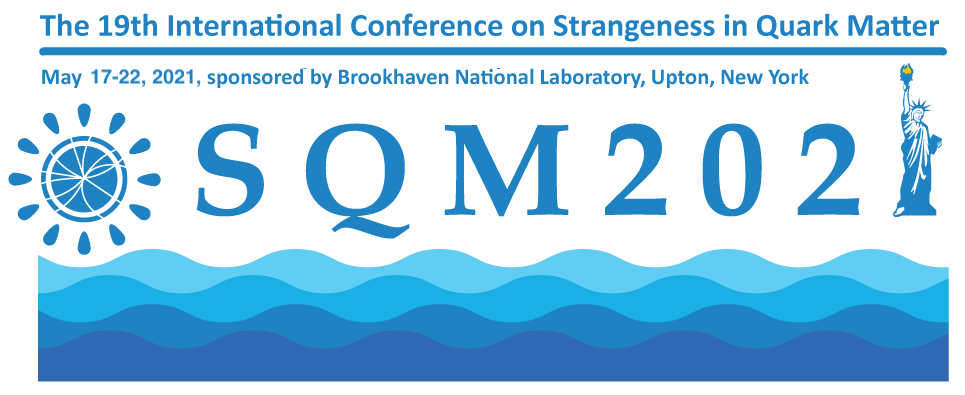Speaker
Description
Cumulants of net charge fluctuations and their correlations at vanishing
values of the conserved charge chemical potentials ($\mu_{B,Q,S}=0$)
provide the basis for Taylor expansions of various thermodynamic observables
at non-zero values of the chemical potentials. At $\mu_{B,Q,S}=0$ continuum
extrapolated results for these cumulants can directly be compared
with charge fluctuations and correlations currently being measured by the
ALICE collaboration at the LHC.
We present here continuum extrapolated results for all second order
cumulants of net baryon-number, strangeness and electric charge
fluctuations as well as their cross-correlations using the most
resent results obtained by the HotQCD collaboration in (2+1)-flavor QCD.
From this we obtain their temperature derivatives and determine inflection
points which are absent in hadron resonance gas (HRG) model calculations
using a spectrum of point-like, non-interacting resonances. We present a
detailed comparisons of our results with such HRG models based on different
sets of hadron spectra as well as with S-matrix based model calculations.
We update results on model parameters for three body and higher order
S-matrix contributions to the correlation of net baryon-number and electric
charge fluctuations that have been used to explain the so-called proton anomaly
observed by ALICE at the LHC.
We furthermore compare our lattice QCD results for second order cumulants with
models that parametrize repulsive interactions among baryons and anti-baryons
in a hadron resonance gas through a single excluded volume parameter (EVHRG).
We point out that such an approach is not sufficient to describe all second
order cumulants simultaneously. At least independent excluded volume parameter
for strange and non-strange baryons would be needed already for the description of second order cumulants.
| Collaboration | HotQCD |
|---|
